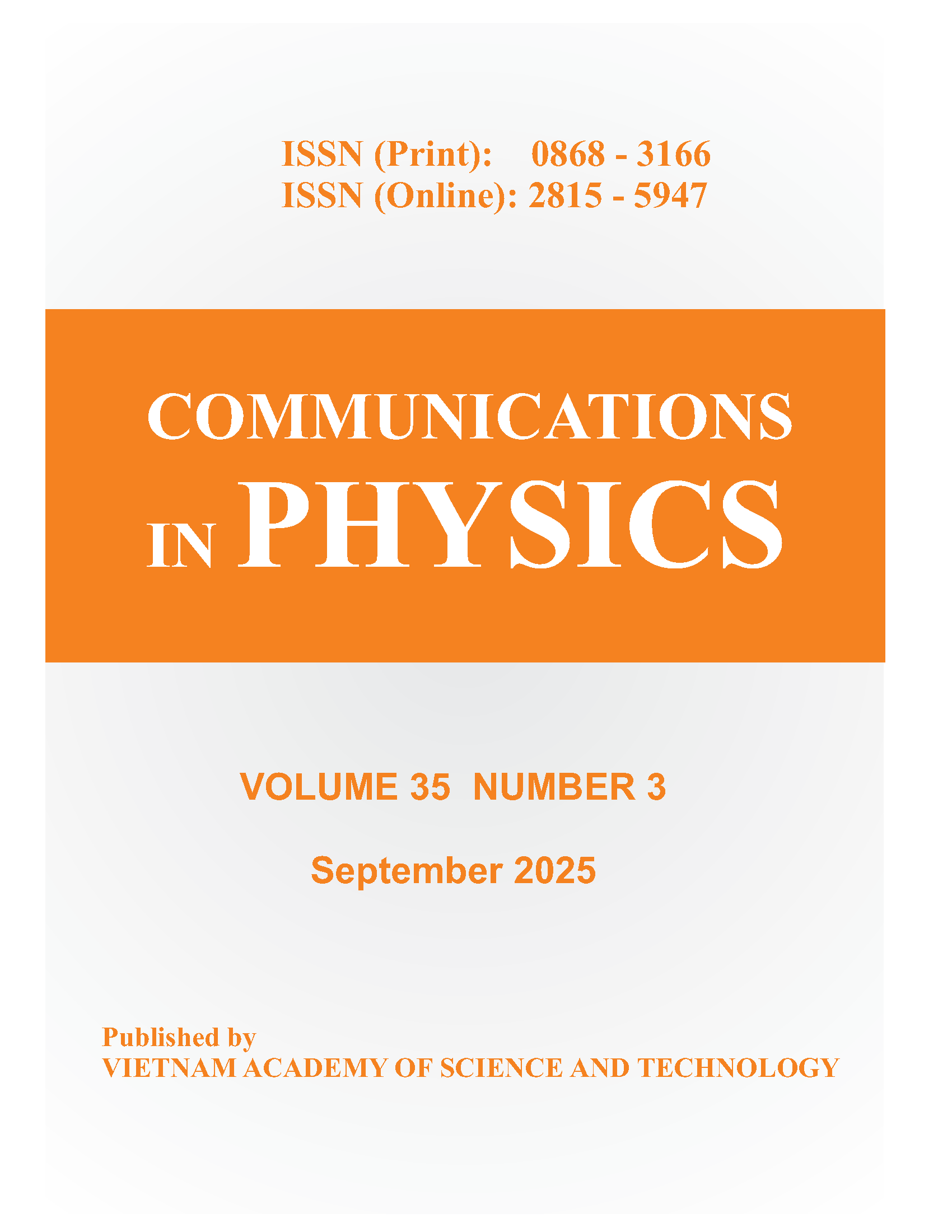Double electromagnetically induced transparency in a four-level lambda atomic system with Doppler broadening
Author affiliations
DOI:
https://doi.org/10.15625/0868-3166/18214Keywords:
effects of atomic coherence.Abstract
In this paper, we study the formation of two electromagnetically induced transparency (EIT) windows in a four-level lambda atomic system with Doppler broadening. The depth and the width of the EIT windows are easily changed by adjusting the intensity of the controlling laser fields. Meanwhile, the position of the EIT windows is also easily shifted by changing the frequency of the laser fields. In particular, by turning on or off one of the two coupling laser fields, the probe field response can be switched between one or two EIT window regimes, i.e., it is possible to switch between absorption and transparency regimes, and vice versa. In addition, our analytical model also allows one to investigate the influence of temperature (or Doppler width) on EIT windows, which is necessary for experimental observations as well as related applications at room temperature.
Downloads
References
S. E. Harris, J. E. Field and A. Imamoğlu, Nonlinear optical processes using electromagnetically induced transparency, Phys. Rev. Lett. 64 (1990) 1107–1110.
K. J. Boller et al., Observation of electromagnetically induced transparency, Phys. Rev. Lett. 66 (1991) 2593–2596.
J. Gea-Banacloche et al., Electromagnetically induced transparency in ladder-type inhomogeneously broadened media: Theory and experiment, Phys. Rev. A. 51 (1995) 576–584.
A.S. Zibrov et al., Observation of a three-photon electromagnetically induced transparency in hot atomic vapor, Phys. Rev. A. 65 (2002) 043817.
V. Ahufinger et al., Electromagnetically induced transparency in a Bose–Einstein condensate, Opt.Com. 211 (2002) 159–165.
S. Sen et al., Comparison of electromagnetically induced transparency in lambda, cascade and vee three-level systems, J. Mod. Opt. 62 (2015) 166–174.
Y. He et al., All-optical switching based on the electromagnetically induced transparency effect of an active photonic crystal microcavity, J. Mod. Opt. 61 (2014) 403–408.
H. Li et al., Electromagnetically induced transparency controlled by a microwave field, Phys. Rev. A. 80 (2009) 023820.
A. Lazoudis et al., Electromagnetically induced transparency in an open V-type molecular system, Phys. Rev. A. 83 (2011) 063419.
S. R. Echaniz et al., Observations of a doubly driven V system probed to a fourth level in laser-cooled rubidium, Phys. Rev. A. 64 (2001) 013812.
J. Qi et al., Electromagnetically induced transparency in an inverted Y-type four-level system, Phys. Scr. 81 (2009) 015402.
H. Li et al., Multiple spontaneously generated coherence and phase control of optical bistability and multistability in a tripod four-
level atomic medium, Appl. Opt. 56 (2017) 4995.
D. X. Khoa et al., An analytical model for cross-Kerr nonlinearity in a four-level N-type atomic system with Doppler broadening,
Chinese Phys. B. 31 (2022) 024201.
L. Zhang et al., The electromagnetically induced transparency in the Y-type four-level atom system at low light levels, Sci. China Ser. G. 48 (2005) 593.
N. H. Bang et al., Effect of Doppler broadening on giant self-Kerr nonlinearity in a five-level ladder-type system, J. Opt. Soc. Am. B. 36 (2019) 3151.
D. X. Khoa et al., Electromagnetically induced transparency in a five-level cascade system under Doppler broadening: an analytical approach, Phys. Scr. 91 (2016) 035401.
Y. Qi et al., Spatial vector solitons in a four-level tripod-type atomic system, Phys. Rev. A. 84 (2011) 023814.
K. M. Devi et al., Dual-band electromagnetically induced transparency effect in a concentrically coupled asymmetric terahertz metamaterial, J. App. Phys. 124 (2018) 063106.
B. Brzostowski et al., EIT Four-Level Lambda Scheme of Cold Rubidium Atoms, Comp. methods in sci. and tech. Special Issue (2010) 13-16.
M. O. Scully et al., Quantum Optics, Cambridge University Press, United Kingdom (2001).
D. A. Steck, 87Rb D line data, http://steck.us/alkalidata (2019).
Downloads
Published
How to Cite
Issue
Section
License
Communications in Physics is licensed under a Creative Commons Attribution-ShareAlike 4.0 International License.
Copyright on any research article published in Communications in Physics is retained by the respective author(s), without restrictions. Authors grant VAST Journals System (VJS) a license to publish the article and identify itself as the original publisher. Upon author(s) by giving permission to Communications in Physics either via Communications in Physics portal or other channel to publish their research work in Communications in Physics agrees to all the terms and conditions of https://creativecommons.org/licenses/by-sa/4.0/ License and terms & condition set by VJS.
Funding data
-
Quỹ Đổi mới sáng tạo Vingroup
Grant numbers VINIF.2022.DA00076











